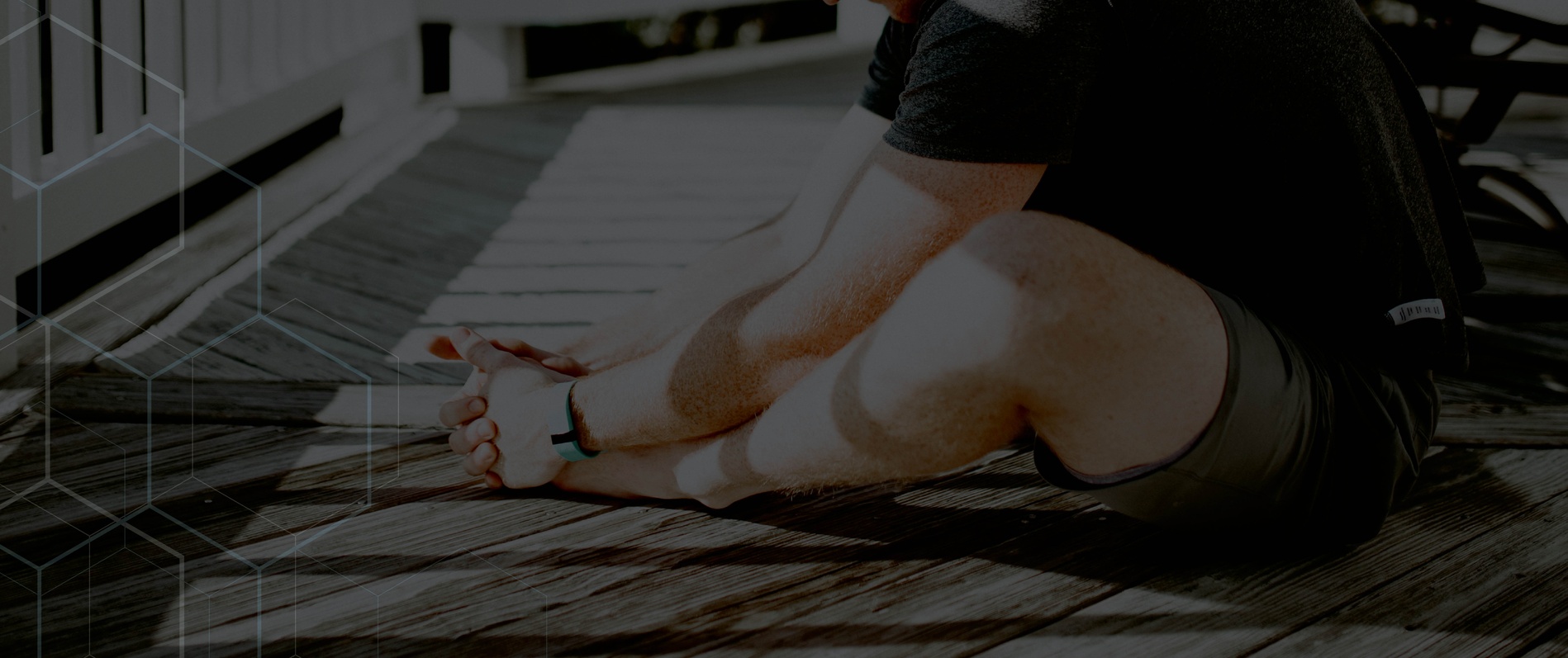
LOW BACK EXERCISES
Session 1
Session #1 begins by addressing soft tissue work with the tennis ball in the Self Myofascial Release series A. First, you will roll the arch of your foot (plantar fascia) which should create an immediate loosening of the muscles running up the back side of your body, since your fascial system functions as 1 unit. Next, you will address the soft tissue around your shin before moving to the back of your shoulder and pec, where you will likely find a lot of soreness. Upon moving to the foam roller, you will roll the IT band. This is a critical spot to roll, because you can’t address it with any sort of stretching. You are almost assured of finding many sore spots on the IT band. Follow this by rolling the front (quadriceps) and inside (groin) of the upper leg before moving on to outer gluteus and side of your trunk up toward the shoulder (latissimus dorsi).
With tissue density decreased you will move on to Flexibility series A, the first of 4 static stretching protocols where the goal is to now lengthen the muscle. You will target 4 areas of the body that were addressed during soft tissue work. The pec will be lengthened while using a wall for assistance. The quadriceps and groin will be stretched from standing positions. And, the supine shin grab will address the glute and upper hamstring while maintaining stability in the trunk.
You will perform 5 mobility drills after completing the flexibility exercises. For the ankle wall mob, position your foot next to a wall so that your knee can tap the wall when your ankle reaches it maximum range of motion through flexion. The lying psoas march resembles the supine shin grab from the flexibility set, except you will not be assisting the range of motion with your arms. You will be addressing hip internal rotation with the knee to knee movement. Extension of the thoracic spine will be trained while using your foam roller as a hinge. The objective is to wrap your upper back around the foam at multiple segments. With an element of thoracic extension in place, you will work for rotation in a side-lying position.
Your activation segment starts by addressing the fundamentals of posture in a standing position. The objective will be to separate your rib cage from pelvis while pulling your head and shoulders back in line with your hips. The quad draw-in teaches you how to effectively brace your spine. You will use this procedure throughout the entire program. The bent-knee hip extension off a bench teaches you to access extension through your hip while stabilizing your trunk. The position on the bench doesn’t allow you to extend your back. The forearm wall slide turns on the serratus anterior which drives upward rotation of the scapula. This also impacts the movement of your thoracic and lumbar spine. The march on the wall teaches your body to recognize contrasting actions at the hip on opposite sides. Muscles associated with the hip flexors will be active on 1 side, while hip extensors (gluteus) will be active on the side in contact with the ground. The no money exercise turns on the external rotators of the shoulder which assist in correcting posture.
Your first strength training movement functions as an upper body push pattern. The cable/band chest press will be performed from tall kneeling posture to emphasize hip extension and glute activation along with sound postural fundamentals in the upper body. The chest press will be followed by the wall slide “filler” to rehearse clean upward scapular rotation. Your lower body knee dominant pushing pattern will be the stability ball squat. The aid of the stability ball allows you to comfortably push your hips back on the squat to ensure that your squat pattern is sound before progressing forward. The wall march isometric hold “filler” will follow in which opposite contrasting activity on opposite hips is rehearsed. Next, you will perform the low row from a tall kneeling position. The low row functions as your upper body pulling pattern and should be performed with the shoulders set back and down through the entire movement. Thoracic spine extension will be reinforced in the “filler” movement that follows. Your fourth movement is the cable/band pull-through which grooves a hip hinge pulling pattern. Picture a lasso around your waster and someone pulling your hips back. Be sure to keep your weight situated on your heels in this movement. Fundamental core stability and bracing will be reinforced in the draw-in filler.
Your session will conclude with Exit Work as you choose 1 or more components of your Prep Work and repeat the process to emphasize clean movements once again.